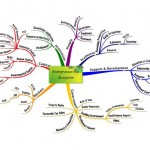 I wrote yesterday about the various designs you can look to deploy when building your collaboration network, with each design having varying degrees of connectivity. The hub and spoke at one end sees collaboration partners only linked up to you, whereas the integrated network sees your partners connected to one another as well.
I wrote yesterday about the various designs you can look to deploy when building your collaboration network, with each design having varying degrees of connectivity. The hub and spoke at one end sees collaboration partners only linked up to you, whereas the integrated network sees your partners connected to one another as well.
Suffice to say, most companies aren’t one or the other but a mixture of the two. It’s this point that I’d like to explore today, and look a little wider at the collaboration ecosystem of which your company is a part. This will allow you to explore the connections and partnerships that your own partners have, and how it all fits together.
This is important for a number of reasons. For instance it gives you better insight into the motivations and status of your partners, which can significantly alter how your own dealings with them manifest themselves.
Status is particularly important when you begin looking at the entire collaborative ecosystem. We often associate an exceptional brand purely with its ability to influence consumer decisions, but it is equally important when it comes to collaborating with external partners.
In essence, your competitive advantage from these partnerships typically derives from the status you enjoy in this ecosystem, with higher status companies able to secure more information, cooperation and power from their partners than their lower status peers.
So how can you secure high status? Aside from the obvious route of doing great things and branding yourself accordingly, you can also keep the right kind of company. The saying goes that we are judged by the company we keep, and whilst the saying was meant for us as individuals, it applies equally to corporate entities. If you want high status therefore, collaborating with high status companies can help you achieve that. You can achieve this kind of partnership by becoming a thought leader in your industry, thus increasing your visibility as an entity of note.
A strong reputation can also be derived from your past collaborative dealings. High status partners will want to be confident that your company is one of note that they can do fine things with, so your branding will need to communicate that you are both a thought leader but also a reputable collaborator that creates value for the companies they work with.
Now you may say that these things are obvious, yet without looking at the ecosystem from a distance it can often be difficult to ascertain the relative status of the people you work with, and without this perspective it is difficult to improve your position accordingly. So when building your collaborative partnerships, take a few minutes to step back and map out the entire ecosystem to better understand your place within it.